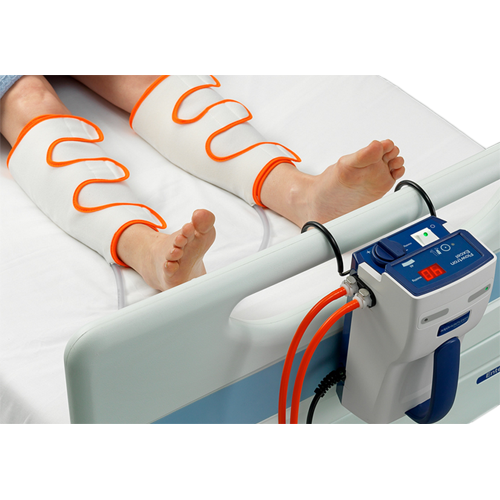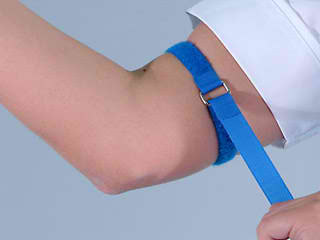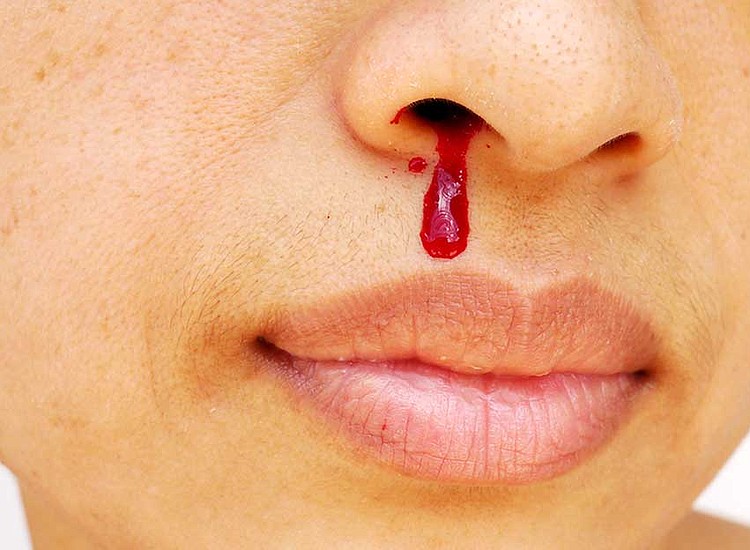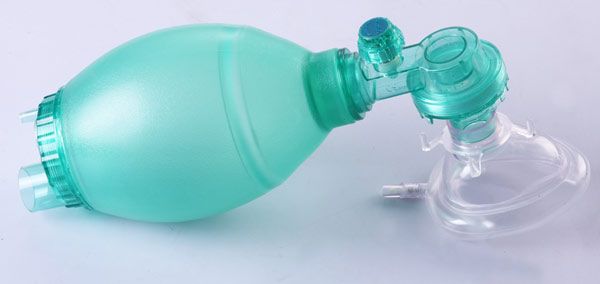Important Nursing Image base Questions with Rationale
Important Nursing Image base Questions selected from Previous Nursing Exam Papers
Q-1 Name of the below given instrument that is mainly used in gynecology-

A. Otoscope
B. Proctoscope
C. Fetoscope
D. Stethoscope
Ans. C
The fetoscope - also known as a fetal stethoscope is a tool similar to a stethoscope but used for fetal heart rate monitoring. Where the stethoscope has a flat bell ideal for hearing heart beats through the chest, the fetoscope has a rounded bell, which is more sensitive for hearing a baby's heart beat through a woman's belly. The fetoscope's rounded bell works by amplifying the sound of the baby's heartbeat. It can be used from approximately 20 weeks gestation and during the birth process
Q. 2 Which of the following device is being used in below image-

A. Blood Pressure Cup
B. DVT Pump
C. Air Bed Device
D. None of these
Ans-B
DVT Pumps are pneumatic compression pumps designed to prevent people from getting deep vein thrombosis (DVT), which can be life-threatening. DVT Compression Pumps deliver pressure to increase blood flow in the venous system of the limbs so that blood does not clot. Those who are especially susceptible to thrombosis are people who recently had surgery or who are immobile or sedentary throughout the day. Prolonged inactive states often cause blood to pool around venous valves slowing circulation. The lack of proper blood flow leads to blot clotting. Vitality Medical offers a range of different DVT machines to prevent and avoid the effects of deep vein thrombosis.
Q.3 Identify the abnormality in below image-

A. Deviated Nasal Plate
B. Deviated Nasal Septum
C. Deviated Nasal Bone
D. Deviated Nasal Membrane
Ans. B
A deviated septum is an abnormal condition in which the top of the cartilaginous ridge leans to the left or the right, causing obstruction of the affected nasal passage. The condition can result in poor drainage of the sinuses. People can also complain of difficulty breathing, headaches, bloody noses, or of sleeping disorders such as snoring or sleep apnea.
Q 4.What is the name of the device in below image-

A. Tourniquet
B. Blood Pressure cup
C. Bandage
D. Disposable thermometer
Ans-A
- A device for compression of an artery or vein; uses include stopping of the excessive bleeding of a hemorrhage, maintenance of a nearly bloodless operative field, prevention of spread of snake venom after a snakebite, and aiding in obtaining blood samples or giving intravenous injections.
Q 5. Which reflex you seen in below image-

- A. Moro Reflex
- B. Planter Reflex
- C. Swallowing Reflex
- D. Leg Reflex
Ans .B
The normal response to this stimulus is plantar flexion of the foot and toes, called the plantar reflex. This means that the foot and toes will flex or 'curl' away from the leg. In the Babinski reflex, much the opposite happens and the big toe extends upwards toward the leg, called dorsiflexion, while the other toes fan out. This response, it should be noted, is normal in infants up to 12 months of age and this is simply thought to show the immaturity of their corticospinal pathway. It should start to wane between 6 to 8 months of age and disappear after one year.
Q 6. Identify the name of below given machine/instrument-

A. Pulse oximeter
B. Multipara monitor
C. ABG Machine
D. CTG Machine
Ans- D
Cardiotocography (CTG) is a technical means of recording the fetal heartbeat and the uterine contractions during pregnancy. The machine used to perform the monitoring is called a cardiotocograph, more commonly known as an electronic fetal monitor (EFM). Fetal monitoring was invented by Doctors Alan Bradfield, Orvan Hess and Edward Hon.
Q. 7 Name of the position in below image-

A. Supine
B. Prone
C. Lithotomy
D. Side lying
Ans-C
The lithotomy position involves the positioning of an individual's feet above or at the same level as the hips (often in stirrups), with the perineum positioned at the edge of an examination table.
Q.8 The condition in below given image is known as-

A. Hemoptysis
B. Epistaxis
C. Micturition
D. Hematemesis
Ans-B
Hemorrhage from the nose, usually due to rupture of small vessels overlying the anterior part of the cartilaginous nasal septum. Minor bleeding may be caused by a blow on the nose, irritation from foreign bodies, or vigorous nose-blowing during a cold; sometimes it occurs in connection with menstruation. If bleeding persists in spite of first aid measures, medical attention is advisable. Called also nosebleed.
Q.9 In below video a nurse applies a device to the patient that is used to assessing-

A. SpCo2
B. SpO2
C. Temperature
D. Respiration
Ans-B
Pulse oximetry, or SpO2, has been increasingly in the public eye recently as some doctors are recommending their patients diagnosed with COVID-19 monitor their SpO2 levels at home. So it makes sense that many people are wondering for the first time, “What is this SpO2?” Have no fear, keep on reading and we’ll walk you through just what SpO2 is and how it’s measured.
Q.10 The below given device is used in-

A. Endotracheal Intubation
B. Respiration
C. Nasogastric Intubation
D. None of these
Ans-B
Ambu bag or generically as a manual resuscitator or "self-inflating bag", is a hand-held device commonly used to provide positive pressure ventilation to patients who are not breathing or not breathing adequately. The device is a required part of resuscitation kits for trained professionals in out-of-hospital settings (such as ambulance crews) and is also frequently used in hospitals as part of standard equipment found on a crash cart, in emergency rooms or other critical care settings.
Q.11 In the below Video which of the following artery is used for catheterization-

A. Branchial Artery
B. Radial Artery
C. Femoral Artery
D. Ulnar Artery
Ans-B
An arterial line is usually inserted into the radial artery in the wrist, but can also be inserted into the brachial artery at the elbow, into the femoral artery in the groin, into the dorsalis pedis artery in the foot, or into the ulnar artery in the wrist. A golden rule is that there has to be collateral circulation to the area affected by the chosen artery, so that peripheral circulation is maintained by another artery even if circulation is disturbed in the cannulated artery.
Q.12 Identify the condition in below image-

A. Edema
B. Cyanosis
C. Cellulitis
D. Gangrene
Ans-B
The underlying causes of Cyanosis , or blue hands or feet or blue fingernails, is the tissues of the body do not receive blood with the requisite levels of oxygen, this can happen due to a variety of reasons. The blood is responsible for carrying oxygen through your body.
Q.28 In below image the scale is used to assess-

A. Pain
B. Consciousness
C. Hearing
D. Knowledge
Ans-A
A pain scale measures a patient's pain intensity or other features. Pain scales are a common communication tool in medical contexts, and are used in a variety of medical settings. Pain scales are a necessity to assist with better assessment of pain and patient screening. Pain measurements help determine the severity, type, and duration of the pain, and are used to make an accurate diagnosis, determine a treatment plan, and evaluate the effectiveness of treatment.
Q.36 In below shown image is a spirometry type of-

A. Incentive spirometry
B. Excentive spirometry
C. Positive spirometry
D. Negative spirometry
Ans-A
An incentive spirometer is a handheld medical device commonly used after surgery or with certain lung conditions such as chronic obstructive pulmonary disease (COPD), pneumonia, or asthma to help keep your lungs healthy. The device helps retrain your lungs to take slow, deep breaths, which, following surgery or a COPD exacerbation, may be too painful to do on your own.
Q.48 In 'DPT' Vaccine "P" Stands for-
A. Poliomyelitis
B. Whooping cough
C. Measles
D. Diphtheria
Ans-B
The abbreviation DTaP stands for the three diseases, which are: D = Diphtheria; T = Tetanus; P = Pertussis (the medical term for whooping cough).